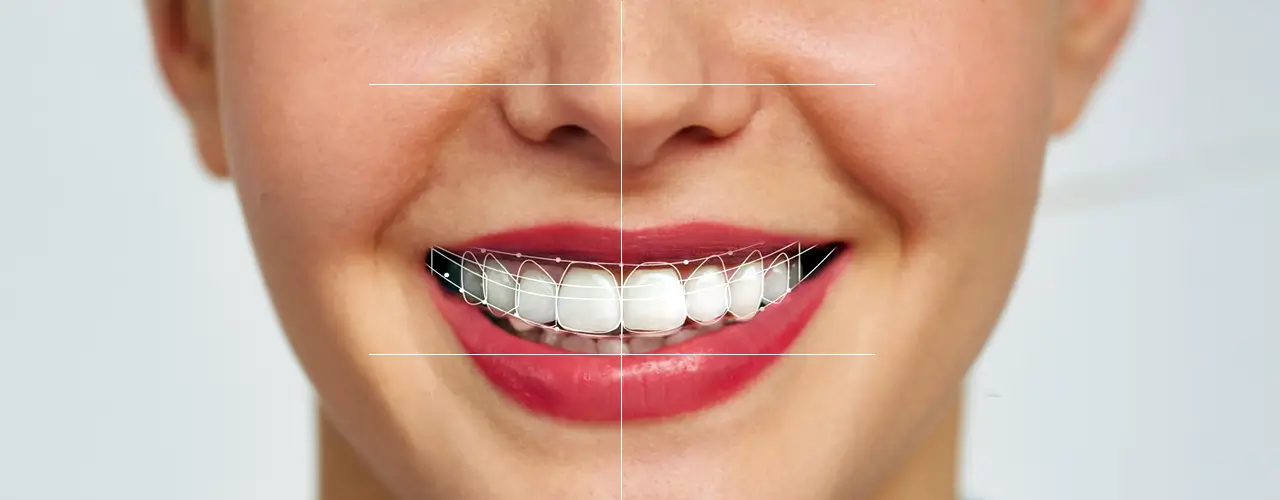
The field of dentistry is constantly evolving, with technological advancements paving the way for treatments that prioritize both aesthetics and conservation of natural tooth structure. Digital Smile Designing (DSD) and Minimally Invasive Dentistry (MID) are two groundbreaking approaches that, when combined, offer patients personalized, precise, and gentle dental care. Integrating these methodologies ensures a balance between achieving the perfect smile and maintaining long-term oral health.
Understanding Digital Smile Designing (DSD)
Digital Smile Designing is a cutting-edge dental technology that allows dentists to create customized smile plans using digital tools. By analyzing facial features, dental structures, and individual preferences, DSD creates a virtual simulation of the patient’s ideal smile. This visualization enhances communication between the dentist and patient, ensuring that the final results meet expectations.
What Is Minimally Invasive Dentistry (MID)?
Minimally Invasive Dentistry focuses on preserving the maximum amount of natural tooth structure. This approach uses advanced techniques and materials to prevent unnecessary removal of enamel and dentin. The goal is to treat dental issues with minimal intervention while promoting overall oral health.
Key principles of MID include:
- Early detection and prevention of dental problems.
- Use of adhesive materials and technologies for conservative restorations.
- Emphasis on patient comfort and long-term preservation of teeth.
How DSD Enhances Minimally Invasive Dentistry
The integration of DSD with MID offers a unique blend of advanced planning and gentle treatment. Here’s how they complement each other:
1. Accurate Diagnosis and Treatment Planning
With DSD, dentists can conduct a detailed analysis of the patient’s teeth, gums, and facial features. This comprehensive evaluation helps in identifying the least invasive treatment options. For example, DSD can guide the placement of veneers or dental restorations, ensuring minimal tooth preparation.
2. Improved Precision
DSD provides a virtual blueprint of the proposed smile, which can be translated into precise procedures. Whether it’s contouring teeth or placing bonded restorations, the technology minimizes the risk of over-preparation, aligning with MID principles.
3. Enhanced Communication
Patients are often hesitant about dental procedures that involve altering their natural teeth. With DSD, they can see a digital mock-up of their future smile, providing clarity and confidence. When combined with the minimally invasive approach, it reassures patients that their natural tooth structure will be preserved.
4. Use of Conservative Restorations
DSD supports the use of thin, adhesive restorations like veneers, onlays, and inlays. These options align with MID’s philosophy by requiring less enamel removal compared to traditional crowns. The digital planning ensures that these restorations fit perfectly, reducing the need for adjustments.
5. Better Outcomes with Biomimetic Materials
DSD integrates seamlessly with biomimetic materials used in MID, such as composite resins and ceramics. These materials mimic the natural properties of teeth, ensuring functional and aesthetic restorations.
Applications of DSD and MID Integration
The combined approach of DSD and MID can be applied to various dental treatments, including:
- Veneers and Bonding: Creating flawless smiles with minimal tooth alteration.
- Orthodontics: Planning aligner treatments that require minimal tooth movement.
- Smile Makeovers: Designing conservative yet transformative solutions.
- Gum Contouring: Digital planning for precise and minimally invasive gum reshaping.
Benefits of Integrating DSD with MID
1. Preservation of Natural Teeth
By using advanced digital planning and conservative techniques, dentists can protect the natural tooth structure, ensuring longevity.
2. Personalized Smile Design
DSD allows for customization based on individual facial features, ensuring that every smile is unique and natural-looking.
3. Reduced Treatment Time
The precise nature of DSD minimizes the need for multiple adjustments during treatment, leading to quicker results.
4. Enhanced Patient Satisfaction
Patients feel more involved in the process, as they can see the proposed outcomes before the treatment begins.
5. Long-Term Oral Health
By avoiding unnecessary removal of tooth material, MID ensures better oral health and reduces the risk of future complications.
Case Example: A Conservative Smile Makeover
A patient with slightly discolored and uneven teeth wanted a smile makeover but was apprehensive about losing natural enamel. Using DSD, the dentist designed a personalized smile plan that required only minimal tooth preparation for porcelain veneers. With MID techniques, the veneers were bonded seamlessly, resulting in a natural, radiant smile without compromising the tooth structure.
If you live in Tirupati and are searching for Dental Clinic in Tirupati, consider Praveen Dental Clinic. Call us at 988 529 2472 to book an appointment.
Conclusion
Integrating Digital Smile Designing with Minimally Invasive Dentistry marks a significant step forward in modern dental care. This combination ensures that patients receive customized, aesthetically pleasing treatments while preserving their natural teeth.
Whether you’re considering a smile makeover or addressing minor dental imperfections, consult a dentist who specializes in both DSD and MID. Together, these approaches can help you achieve a healthy, beautiful smile with minimal intervention.







